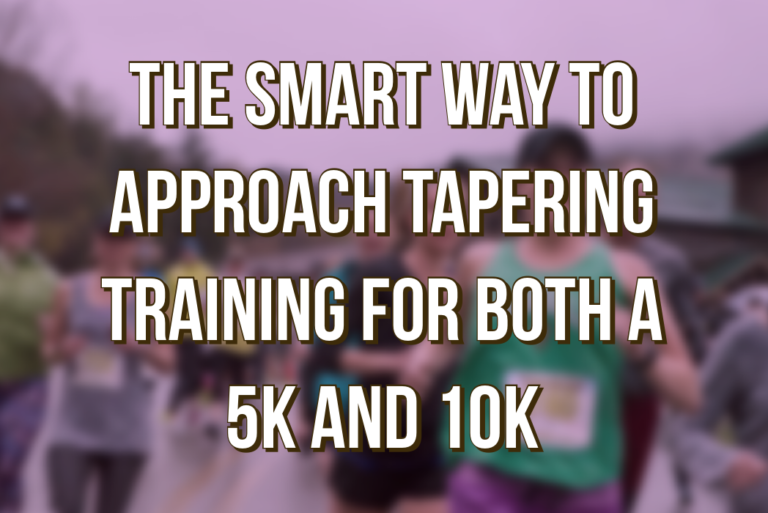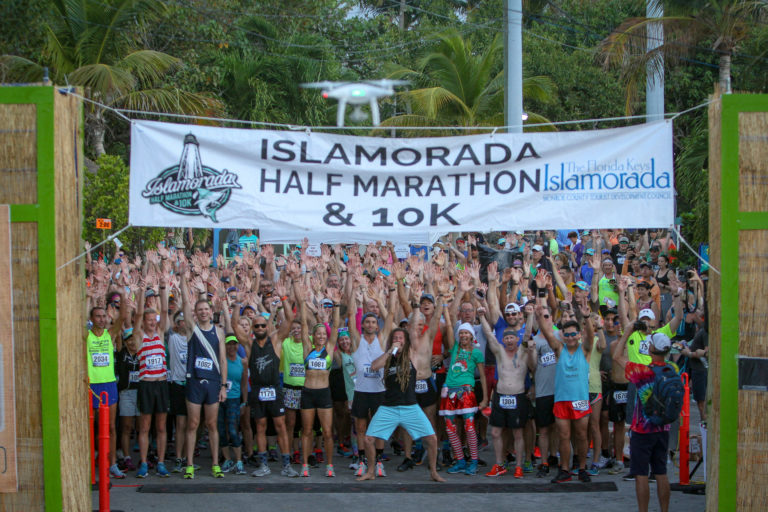
The Smart Way to Approach Tapering Training for Both a 5k and 10k
As a personal trainer who has assisted many serious runners over the years, I have heard this exclaimed numerous times.
“You want me to taper my training for a 10k? A 10k is nothing! I can run a 10k just rolling out of bed in the morning with no preparation at all!”
A 10k is about 6.2 miles, so I understand that it is not a seriously long race for someone that runs on a consistent basis. But don’t discount how tapering your training could lead you to log in your personal best time. In fact, you should be present to hear what my clients say when I tell them to taper before a 5k. Much of it could not be published here without unique symbols hiding the fact that every other word was about four letters long.
Of course, through simple math, you realize that a 5k is only about 3.1 miles long. And while you may be able to jump out of your chair right now and clock in a good time without any preparation at all except for a five-minute notice, there is a method behind the madness.
Why Taper Training?
Cutting back on the frequency and intensity of training for a race about two weeks out will allow all your little aches and pains to heal. Plus, your muscles will bounce back and no longer be continuously sore. You have to admit that you will be able to post the best time if your body has healed all the way. Something as little as an aching heel or a partially strained calf could hold you back severely. You know this. But what you may not realize is that pulled muscle in your core is keeping you from running your best as well. Just because the pain is not attached to your legs does not mean that it is not hurting your time.
Furthermore, cutting back on your training for such a short period of time will not affect your ability to run either a 5k or 10k. Your body won’t just forget how to accomplish this feat in only two weeks. Just approach tapering your training the smart way and you will have the best chance to clock in a time you can be proud of.

Tapering for a 5k
With a 5k being 3.1 miles, and the tapering of your training starting two weeks before the actual race day, you may be running a lot less during this time than you have in years.
Two weeks out, go ahead and run a practice 5k and record your time afterward. But from this point on, you will not run that distance again until race time.
There are three ways tapering is going to affect your normal training routine. \
Distance
When you are two weeks out from the 5k race, cut back the distance you are running by 25 percent. So instead of running 3.1 miles every workout, shoot for 2.3 miles in total.
But once you are one week out, cut it to half the distance. This may be a struggle mentally as you might not think you are getting much of a workout since you are running only about 1.5 miles every training day. But believe in the process. Your body is healing and getting ready for the big day!
Number of Training Days
This will mostly depend on how often you train every week. If you only run every other day as is, then just more or less stay with the routine. But if you train every day or six days a week, eliminate half of your workouts. Sticking with an every other day theme will do your body good during this tapering period. It is only for two weeks until the race and then see first hand how good it can be for your overall time.
Intensity
While you want to keep some of your intensity during the two week tapering period, you definitely don’t want to run everything like it is a sprint and you are Usain Bolt. Two weeks out, run at about 80 percent intensity. One week out, cut it back to about 70 percent intensity. These runs aren’t meant to be a leisurely jog as you want to still put forth the effort, but don’t go full bore as your body is healing.
Tapering for a 10k
Tapering in preparation for a 10k is much like tapering for a 5k. It is very similar, but the distance you are able to run two weeks out and one week out goes up of course.
Distance
Stick with the math. Two weeks from race day, do your practice 10k and record your time. From there on out, during week two, cut back the distance by 25 percent, which means you will basically be running 4.5 miles.
During the week right before the race, stick with running only three miles during your tapering period. Don’t be concerned that you are not training to the best of your ability. Play it smartly and allow everything to heal. After all, your body could probably take a whole month off completely and you could still run a 10k on your very first workout back. Muscle memory is a real thing.
Number of Training Days
Once again, stick with an every other day routine during these two weeks. In fact, if you wanted to, you could take two or three days off completely before the race day. Don’t doubt the effectiveness of tapering your training until you try it. Your body will respond favorably.
Intensity
Two weeks out, stick with about 80 percent maximum effort during your training days. During the week before the big day, 70 percent maximum effort is fine. You do not want to lose your intensity during the tapering period, but you do have to dial it back to less than a full effort.
Don’t Knock It Until You Try It
I have worked with many serious runners that refuse to taper their training before a race. I understand that it takes the right mentality. It doesn’t matter if it is a 5k or a full marathon. They want to run full blast right up until race day. As I am not one to twist their arm, I just mention the benefits and leave it at that.
Unfortunately for some of these runners, they learned they had to start tapering the hard way as they pushed themselves too much a week out from the race and injured themselves.
What’s the worst that can happen if you try tapering your training for the first time? If you stick with the program and your finishing time is not what you wanted, you don’t have to ever try it again. But on the other hand, if you knock even seconds off of your previous best and your body is at full strength, why wouldn’t you do this for every race?

Ryan Crawley
Ryan Crawley is a journalist, educator, and health and fitness fanatic that currently makes his home in Illinois. With a Masters in Reading and Literacy and award-winning personal training results with his fitness clients, he is still reminded daily that he is not a doctor like his wife Katie. Ryan enjoys spending time with his dogs Flair and Smoosh and kitten Charlotte. In his free moments, he likes to write books for children that will hopefully be on shelves in the near future.






